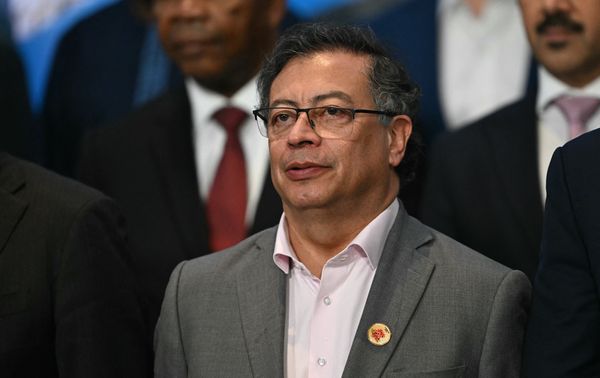Lights flickered back to life across most of Spain and Portugal on Tuesday after a massive blackout hit the Iberian peninsula, stranding passengers in trains and elevators while millions lost phone and internet coverage.
Electricity had been restored to nearly 90% of mainland Spain by early on Tuesday, the grid operator REE said. Power was restored overnight to around 6.2m households in Portugal out of 6.5m, according to the national electricity grid operator. Lights also came on again in Madrid and in Portugal’s capital, Lisbon.
Barely a corner of the peninsula, which has a joint population of almost 60 million people, escaped the blackout. But no firm cause for the shutdown has yet emerged.
The Portuguese prime minister, Luis Montenegro, said the source of the outage was “probably in Spain”. Spain’s prime minister, Pedro Sánchez, said that all the potential causes were being analysed and warned the public not to speculate because of the risk of “misinformation”.
People were trapped in lifts, stuck on trains, stalled in traffic and abandoned in airports. Hundreds stumbled along pitch-black metro tunnels using their phone torches; others scrambled for basics in supermarkets that could only take cash, or began long trudges home from work.
Mobile networks went down and internet access was cut as power failed at 12.33pm (11.33 BST). Hospitals postponed routine operations but used generators to attend to critical cases, and while electronic banking was able to function on backup systems, most ATM screens were blank.
In scenes reminiscent of the 2003 outage that caused widespread blackouts in the US north-east, rail services across the Iberian peninsula were halted, air traffic disrupted and traffic lights extinguished. Hundreds of people had to be rescued from jammed lifts.
The mayor of Madrid, José Luis Martinez-Almeida, had urged people to minimise their journeys and stay where they were, adding: “It is essential that the emergency services can circulate.” Play at the Madrid Open tennis tournament was suspended.
By 10pm local time on Monday, 62% of Spain’s substations were back online (421 of 680) and 43.3% of the power demand had been met, while Portugal’s grid operator REN said it had restored power to 85 of the country’s 89 substations.
Red Eléctrica had previously cautioned that it could take between six and 10 hours to fully restore supply after what it called an “exceptional and totally extraordinary” incident.
Along a major thoroughfare in Madrid’s Argüelles neighbourhood, the restoration of the power supply prompted whoops of delight and a round of hearty applause among the many people wandering the street.
Sánchez said that the power cut originated at 12.33pm, when, for five seconds, 15 gigawatts of the energy that was being produced – equivalent to 60% of all the energy that was being used – suddenly disappeared.
“That’s something that has never happened before,” he added. “What prompted this sudden disappearance of the supply is something that the experts still haven’t been able to determine. But they will … All potential causes are being analysed and no hypothesis or possibility is being ruled out.”
Sánchez thanked France and Morocco for sending additional electricity to Spain, and said the current shortfall would be eased using gas and hydroelectric power.
Widespread outages are unusual in Europe. In 2003, a problem with a hydroelectric power line between Italy and Switzerland caused blackouts for about 12 hours, and in 2006 an overloaded power network in Germany caused electricity cuts across parts of the country and in France, Italy, Spain, Austria, Belgium and the Netherlands.
The prime minister said additional nationalpolice and Guardia Civil officers had been deployed across the country to ensure people’s safety overnight, adding that hospitals were functioning well thanks to the efforts of healthcare workers.
He said telecommunications services were still suffering interruptions, mainly because of a lack of electricity supply to antennae.
Sánchez said that only 344 of the 6,000 flights in Spain on Monday had been cancelled, and that the country’s roads network was working well, barring some tailbacks.
The main travel disruption had occurred on the rail network, where 35,000 passengers trapped on more than 100 trains had been helped by rail companies and the military emergencies unit. Eleven more trains that had stopped in remote areas were still waiting to be reached.
In Madrid and other cities, traffic lights ceased to function, causing gridlock as vehicles slowed to avoid collisions, while metros were halted. Spain’s national road authority, DGT, urged motorists to avoid using the roads as much as possible.
El País newspaper posted photos and video on its website of passengers navigating darkened metro tunnels in the Spanish capital and police directing traffic on the city’s streets. Footage also showed its own reporters working by torchlight.
The Spanish health ministry said in a social media update it was in contact with regional authorities to assess the scope of the widespread blackout but reassured the public that hospitals had supplementary systems in place.
In Portugal, the outage hit the capital, Lisbon, and surrounding areas, as well as northern and southern parts of the country. Lisbon metro carriages were evacuated and ATMs and electronic payment systems cut out.
Sánchez said that eight of Spain’s 17 autonomous regions – Andalucía, Castilla-La Mancha, Extremadura, Galicia, La Rioja, Madrid, Murcia and Valencia – had declared level 3 emergencies, placing responsibility for the response in the hands of the central government. He said schools in those areas would be open on Tuesday, but would not be offering regular classes.
He said the situation across the country remained very “asymmetric” on Monday night, with some regions already having 90% of their power restored, while others had recovered less than 15%.
• This article was amended on 29 April 2025 to remove a quote, incorrectly attributed to REN, stating that a “rare atmospheric phenomenon” had caused the outage.







